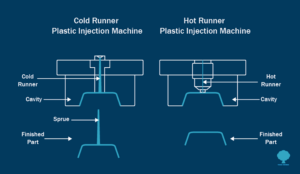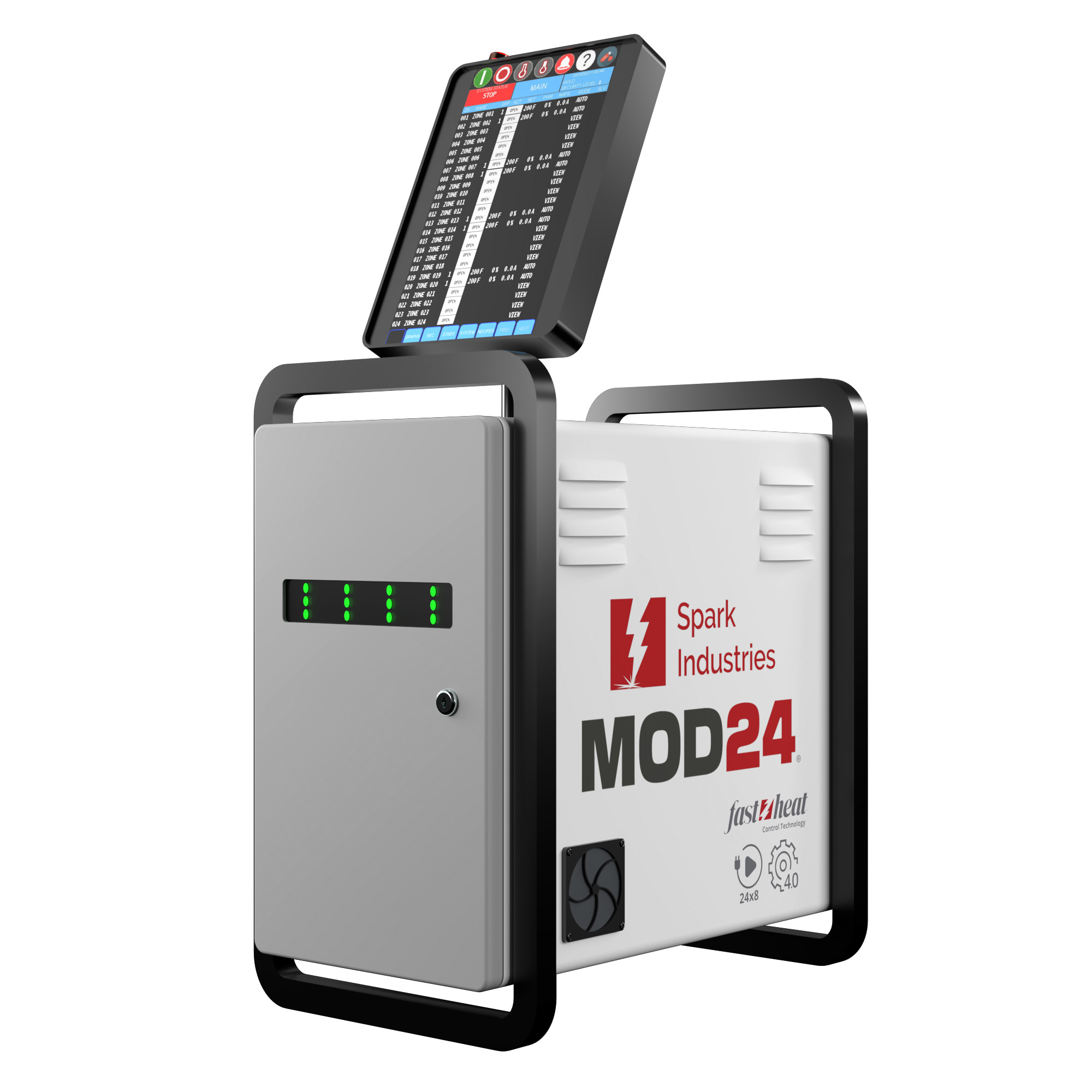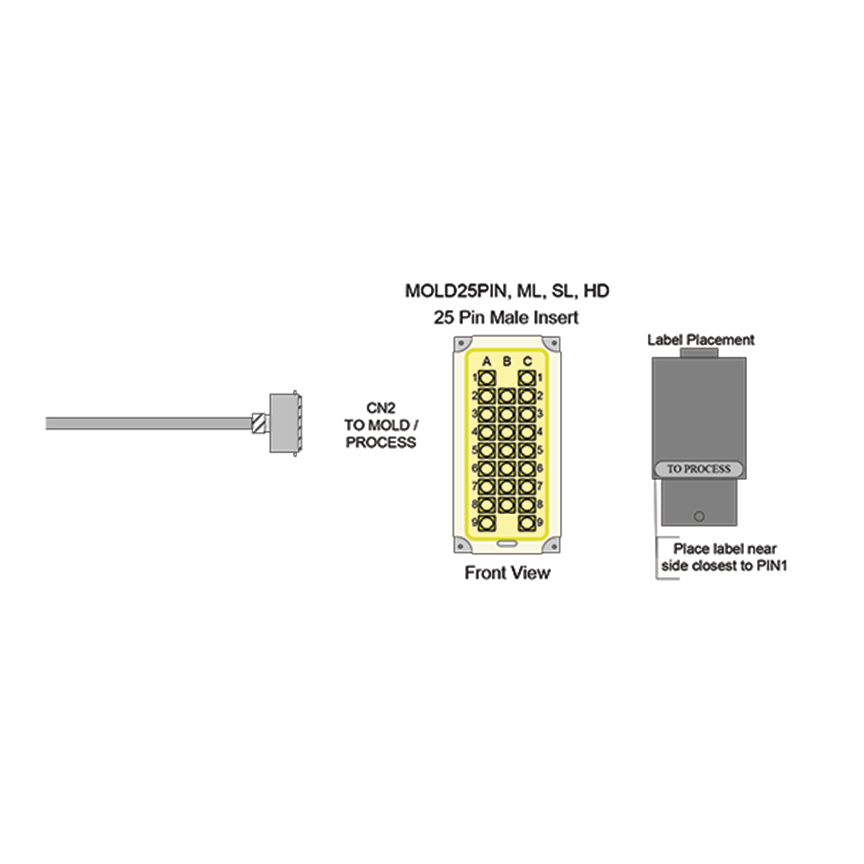When hot runner technology was first introduced to the plastics industry more than five decades ago, it revolutionized injection molding processing capabilities by improving molded part quality, enhancing operational efficiencies, reducing scrap, and saving money.
A hot runner system is a molten plastic conveying unit used within an injection mold. Another way of saying that a hot runner system consists of heated components (usually by electricity) used inside the plastic injection molds, which brings the molten plastic from the barrel of an injection molding machine into the cavities of the mold.
Hot runner melt channels can have different sizes; the size needed depends on factors such as resin type, injection speed, fill rate, and the molded part. A temperature controller(standalone controller or controls from the injection molding machine) heats the hot runner system within the injection mold and the resin inside the machine barrel to processing temperature and injects the resin into the mold. The resin goes through the inlet, into the manifold, splits to the various nozzles, through injection points (or gates), and into the final mold cavity where the final part is formed. Today’s molds can have anywhere from 1 to over 192 nozzles, depending on the plastic parts being manufactured.
Before hot runner technology was available, cold runners were commonly used on injection molds. Cold runner molds faced many obstacles in conveying the resin from the machine barrel to cavities without affecting the flow and thermal characteristics of the resin. With the advancement of resin types and the complexity of mold and part designs, it became increasingly difficult to control the molding process via cold runner molds to produce molded parts of acceptable quality.
faced many obstacles in conveying the resin from the machine barrel to cavities without affecting the flow and thermal characteristics of the resin. With the advancement of resin types and the complexity of mold and part designs, it became increasingly difficult to control the molding process via cold runner molds to produce molded parts of acceptable quality.
When hot runner technology was introduced, it was a game changer. Now capable of advanced thermal controls, processing wider ranges of resin has become more practical and convenient for injection molders. Hot runner components are individually heated to ensure the resin maintains the temperature continuously through the mold, which couldn’t be done with a cold runner mold. Each hot runner heated component has temperature controls; this ensures the process is optimized to the requirements of each type of resin, delivering the highest possible part quality. Today, hot runners can produce highly complex parts in various sizes utilized in every industry.
ELEMENTS OF A HOT RUNNER
Locating Ring: The locating ring aligns the injection mold with the platen of the molding machine. It ensures the mold is correctly aligned with the machine.
Inlet: When resin is injected into the mold, this is the entry port where the resin enters from the injection machine nozzle. Depending on the resin type and the hot runner’s design, the inlet component may be heated to optimize the molding process.
Manifold: The manifold enables resin flow into different nozzles and injection points, also known as gates. Manifolds are typically used where multiple cavities are injected or where more than one nozzle/gate per part is needed. Manifolds are available in various materials, designs, and shapes and are usually optimized to improve the molding process using CAE analysis. There are two main manufacturing techniques: gun drilled and two-piece brazed. Gun drilling is often ideal for simpler, more economical systems, offering a cost-effective solution without compromising basic performance. On the other hand, two-piece brazed techniques are favored when tighter performance criteria are required, such as achieving better balance and faster color change. Additionally, two-piece manifolds are well-suited for multi-material or multi-color molding applications, making them the preferred choice in more complex and precise manufacturing scenarios.
Nozzles: Nozzles are components where the resin is injected into the cavity through a gate. Depending on the design, nozzles are typically installed into the mold plate with or without a manifold. A wide range of nozzle designs are available, using different materials to achieve the processing characteristics of various resins that best suit the application.
Heater Technology: Heater technology forms the foundation of all hot runner systems and plays a crucial role in influencing the final part’s molding process and quality. Various heating options are available, each offering its own set of advantages and disadvantages. Choosing the appropriate hot runner system depends on the molding process, desired part performance, reliability, and cost considerations. The most common hot runner technologies feature heaters with different configurations, including heater bands or plates, paste-in or flexible heaters, and brazed-in heaters.
Fast Heat By Spark has been manufacturing the industry’s leading hot runner controllers since 1957.  We design, manufacture, and support a full range of hot runner temperature controllers. To learn more about Fast Heat By Spark hot runners and other products, be sure to visit https://fastheatbyspark.com/
We design, manufacture, and support a full range of hot runner temperature controllers. To learn more about Fast Heat By Spark hot runners and other products, be sure to visit https://fastheatbyspark.com/




